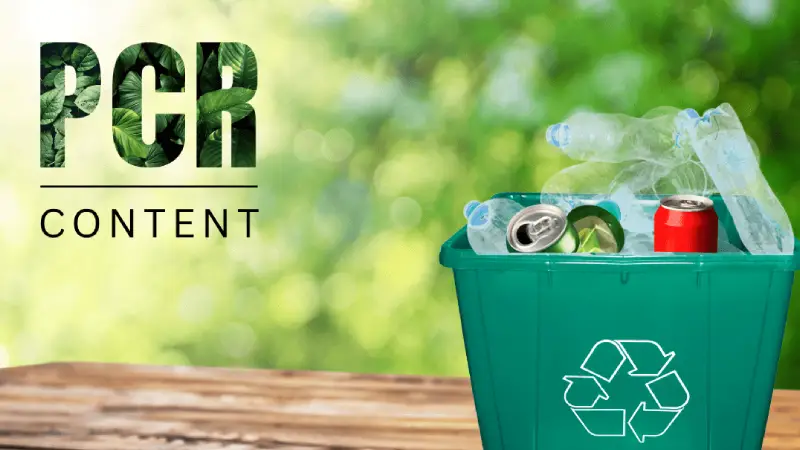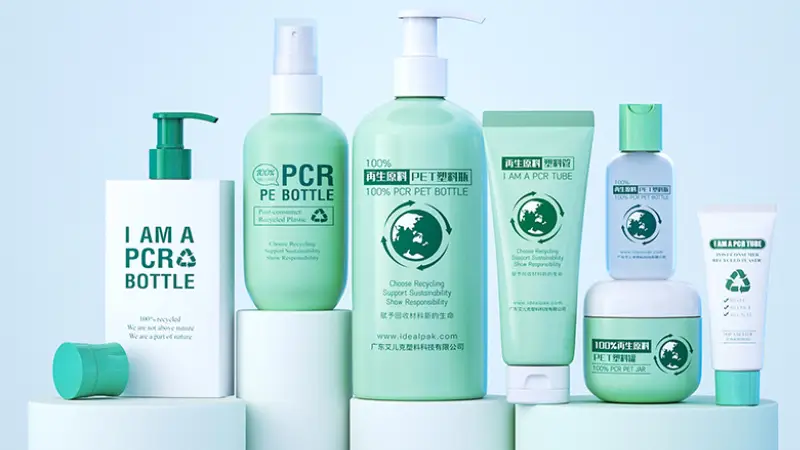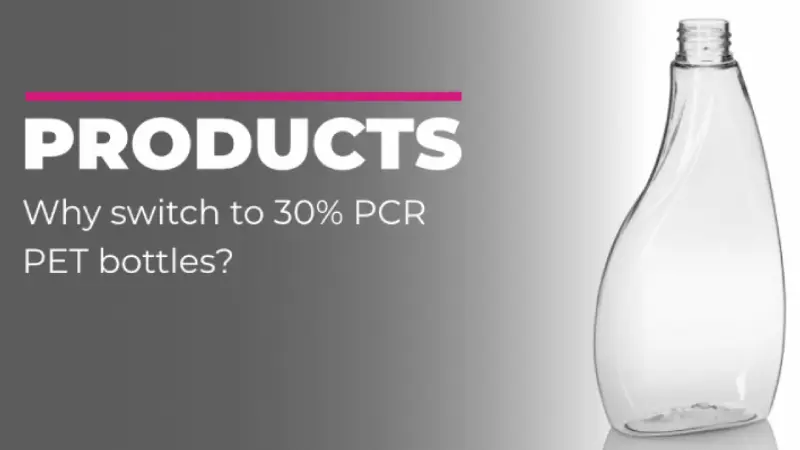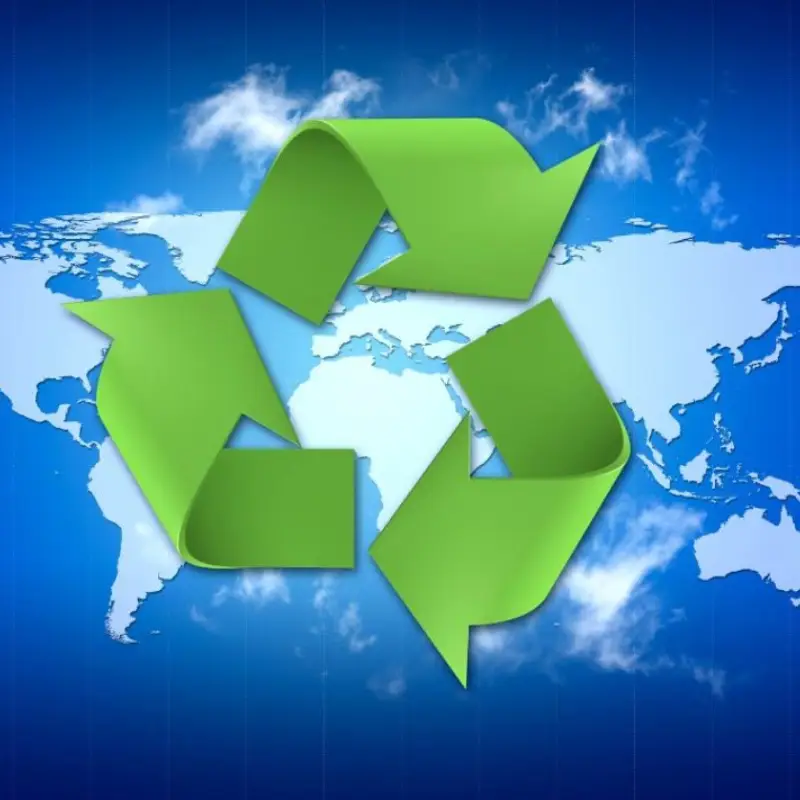In today’s eco-conscious world, “post-consumer recycled content” (PCR) has become a key term in sustainable packaging and manufacturing. It represents materials diverted from landfills after consumer use, then repurposed into new products. Understanding PCR is crucial for businesses aiming to reduce their environmental footprint.
This blog post will delve into the specifics of PCR, explaining its definition, benefits, and how it’s integrated into various industries. We’ll explore the processes involved, the challenges faced, and the impact PCR has on creating a circular economy.
What Is Post Consumer Recycled Content

Post-consumer recycled (PCR) content refers to materials that have been used by consumers and then collected, processed, and repurposed into new products. This means the material has already served its intended purpose and would otherwise end up in landfills or the environment. PCR content is a vital component of the circular economy, aiming to reduce waste and conserve resources.
The process of creating PCR content involves several steps, including collection, sorting, cleaning, and reprocessing. Materials like plastic bottles, cardboard, and aluminum cans are commonly used to create PCR content. This process not only diverts waste from landfills but also reduces the need for virgin materials, which require significant energy and resources to extract and process.
Utilizing PCR content in manufacturing contributes to a more sustainable and environmentally friendly production cycle. By incorporating PCR materials into products and packaging, businesses and consumers can actively participate in reducing their environmental footprint and promoting a more circular and responsible approach to consumption.
What is PCR in Packaging
In the packaging industry, PCR, or Post-Consumer Recycled content, signifies materials that have been collected from consumers after their intended use, processed, and then repurposed into new packaging.
This process diverts waste from landfills and reduces the demand for virgin raw materials, which are the resources extracted directly from nature. Using PCR in packaging involves collecting used items like plastic bottles, cardboard boxes, and glass containers from recycling programs, cleaning and processing them into usable raw materials, and then manufacturing those materials into new packaging products.
What Are Post-Consumer Recycled (PCR) Plastics
Post-consumer recycled (PCR) plastics are plastics that have been recovered from household or commercial waste streams after consumers have used them. These plastics have completed their intended lifecycle and are then collected, sorted, cleaned, and reprocessed into new raw materials. This process diverts plastic waste from landfills and reduces the need for virgin plastic production, which relies on fossil fuels.
PCR plastics can be used to manufacture a variety of new products, including packaging, containers, and durable goods. The quality and properties of PCR plastics can vary depending on the source materials and the reprocessing methods used. However, advancements in recycling technology are continually improving the quality and consistency of PCR plastics, making them a viable and sustainable alternative to virgin plastics.
The Benefits of PCR Packaging

PCR (Post-Consumer Recycled) packaging offers a multitude of environmental and business benefits:
Reduced Environmental Impact:
- By utilizing PCR materials, we significantly decrease the amount of plastic waste that ends up in landfills and oceans. This helps to mitigate pollution and protect ecosystems.
- PCR packaging reduces the demand for virgin plastic production, which requires fossil fuels and contributes to greenhouse gas emissions. This leads to a smaller carbon footprint.
- The energy required to process PCR materials is generally lower than that needed to produce virgin plastics, further reducing environmental impact.
Enhanced Brand Image:
- Consumers are increasingly conscious of environmental issues and prefer brands that demonstrate a commitment to sustainability. Using PCR packaging shows that your company is taking proactive steps to reduce its environmental footprint.
- This can enhance your brand’s reputation and attract eco-conscious consumers, leading to increased customer loyalty and sales.
- Marketing your products with PCR packaging can provide a competitive advantage, differentiating your brand in the marketplace.
Circular Economy Support:
- PCR packaging promotes a circular economy by keeping valuable materials in use and reducing waste.
- It encourages recycling and the development of sustainable waste management systems.
- It helps close the loop, turning waste into a resource.
PCR Packaging Differ vs Compostable and Recyclable Packaging
Understanding the nuances between PCR packaging, compostable packaging, and recyclable packaging is crucial for businesses aiming for sustainable practices. While all three contribute to reducing environmental impact, they operate on distinct principles.

Post-Consumer Recycled (PCR) Packaging:
- Focus:
- Emphasizes the reuse of existing plastic waste. It’s about giving a “second life” to plastics that have already been used by consumers.
- Reduces the demand for virgin plastic production, which is a significant source of fossil fuel consumption.
- Process:
- Involves collecting, sorting, cleaning, and reprocessing used plastic materials.
- The resulting PCR plastics are then used to manufacture new packaging.
- Environmental Impact:
- Decreases landfill waste and reduces the carbon footprint associated with virgin plastic production.
- Contributes to a circular economy by keeping materials in use.
- Limitations:
- The recyclability of PCR plastics can vary, and repeated recycling can degrade the material’s quality.
- it is important to realize, that while it reduces new plastic creation, it still is plastic, and depending on the plastic type, some plastics are very hard to truly recycle.
Compostable Packaging:
- Focus:
- Designed to break down into organic matter under specific composting conditions.
- Aims to return packaging materials to the soil, enriching it with nutrients.
- Process:
- Made from plant-based materials or bioplastics that decompose in composting facilities.
- Requires specific temperature, humidity, and microbial conditions to break down effectively.
- Environmental Impact:
- Reduces landfill waste and the need for conventional plastic production.
- Can contribute to soil health if composted properly.
- Limitations:
- Requires proper composting infrastructure, which may not be widely available.
- Home composting may not always provide the optimal conditions for complete breakdown.
- If not composted correctly, it can behave like regular plastic.
Recyclable Packaging:
- Focus:
- Materials designed to be collected and reprocessed into new products.
- Aims to divert waste from landfills and conserve resources.
- Process:
- Materials like paper, cardboard, certain plastics, and metals are collected and sorted.
- They are then cleaned and reprocessed into new raw materials.
- Environmental Impact:
- Reduces landfill waste and conserves resources.
- Less energy-intensive than producing virgin materials.
- Limitations:
- Recycling rates vary depending on material type and local infrastructure.
- Not all plastics are equally recyclable, and contamination can hinder the process.
- The quality of the recycled material can also degrade over multiple recycling cycles.
Here is a chart to show you the differneces between PCR packaing, and compostable & recycable packaigng in the following:
| Feature | PCR Packaging | Compostable Packaging | Recyclable Packaging |
|---|---|---|---|
| Material Source | Recycled plastic | Plant-based/bioplastics | Various (plastic, paper, metal) |
| Waste Reduction | Reduces plastic waste, less virgin material | Reduces landfill waste | Reduces landfill waste |
| End-of-Life | Recycling dependent, can have limits | Industrial composting needed | Recycling facilities needed |
| Environmental Impact | Reduced carbon footprint | Potential soil benefits | Resource conservation |
| Infrastructure Needs | Recycling infrastructure | Composting facilities | Recycling infrastructure |
| Main Goal | Re-use existing plastics | Biological decomposition | Material re-processing |
In essence, while all three packaging types strive for sustainability, they achieve it through different pathways. PCR packaging utilizes existing plastic waste, compostable packaging aims for biological breakdown, and recyclable packaging focuses on material reprocessing.
Post Consumer vs Pre Consumer Recycled Content
Understanding the nuances between post-consumer and pre-consumer recycled content is crucial for evaluating the environmental impact of products. Both types of recycled content play a role in sustainability, but they differ significantly in their origins and implications.

Pre-Consumer Recycled Content (Post-Industrial)
Origin:
- This material is derived from manufacturing waste. It includes scraps, trimmings, and defective products generated during the production process.
- It never reaches the end consumer.
Characteristics:
- Often cleaner and more consistent than post-consumer materials due to the controlled manufacturing environment.
- Can be more readily available, as it’s generated within existing industrial processes.
- Sometimes referred to as “post-industrial” recycled content.
Environmental Impact:
- Reduces waste within manufacturing processes.
- Conserves resources by reusing materials that would otherwise be discarded.
- Some argue that this material would be reused regardless of the term “recycled content” because it is economically sound to do so for the manufacturer.
Examples:
- Fabric scraps from textile manufacturing.
- Paper trimmings from printing operations.
- Plastic offcuts from molding processes.
Post-Consumer Recycled Content (PCR)
Origin:
- This material comes from products that have been used by consumers and then recycled.
- It includes items collected through recycling programs, such as plastic bottles, aluminum cans, and paper products.
Characteristics:
- Represents material that has completed its intended lifecycle.
- Requires collection, sorting, and processing before it can be reused.
- Can be more challenging to process due to potential contamination.
Environmental Impact:
- Reduces landfill waste and pollution.
- Decreases the need for virgin raw materials.
- Supports the circular economy by closing the loop on material usage.
- Has a very high positive public perception.
Examples:
- Recycled plastic in packaging.
- Recycled paper in office supplies.
- Recycled aluminum in beverage cans.
Here’s a table showing the difference between post consumer and pre consumer recycled content
| Feature | Pre-Consumer Recycled Content | Post-Consumer Recycled Content |
|---|---|---|
| Origin | Manufacturing waste | Consumer waste |
| Stage in Lifecycle | Before consumer use | After consumer use |
| Cleanliness | Generally higher | Potentially lower |
| Availability | Often readily available | Dependent on recycling programs |
| Environmental Impact | Reduces manufacturing waste | Reduces landfill waste and supports circular economy |
| Also known as | Post Industrial recycled content. | PCR |
Both pre-consumer and post-consumer recycled content are valuable components of sustainable manufacturing. However, post-consumer recycled content is often considered to have a greater environmental impact because it addresses the critical issue of consumer waste and promotes a circular economy. When evaluating products, consider the percentage of both pre-consumer and post-consumer recycled content to make informed, environmentally conscious choices.
How to Make the Switch to PCR Packaging

Transitioning to post-consumer recycled (PCR) packaging is a significant step towards sustainable business practices, demonstrating a commitment to environmental responsibility. However, navigating this shift requires careful planning and execution.
This guide provides a structured approach to help businesses seamlessly integrate PCR materials into their packaging, ensuring both environmental benefits and operational efficiency.
Step 1. Conduct a Thorough Assessment
- Begin by evaluating your current packaging materials and processes. Identify areas where PCR materials can be integrated. This includes analyzing the types of plastics you use, their applications, and the compatibility of PCR alternatives. Consider the potential impact on product integrity and shelf life.
- Furthermore, assess your company’s sustainability goals and consumer demands. Understand your target audience’s preferences regarding eco-friendly packaging. Research relevant regulations and industry standards related to PCR usage. This step lays the foundation for a successful transition.
Step 2. Source Reliable PCR Material Suppliers
- Research and identify reputable suppliers of high-quality PCR resins. Verify their certifications and ensure they adhere to sustainable sourcing practices. Request samples and technical specifications to evaluate the quality and consistency of the PCR materials.
- Build relationships with suppliers who can provide a consistent and reliable supply of PCR resins. Consider factors such as material availability, pricing, and lead times. A strong supplier partnership is crucial for a smooth transition.
Step 3. Conduct Rigorous Testing and Prototyping
- Perform extensive testing to evaluate the performance of PCR packaging materials. This includes testing for durability, strength, and compatibility with your products. Conduct pilot runs and create prototypes to assess the feasibility of PCR packaging in your production line.
- It is vital to test for any potential contaminant migration, especially for food and cosmetic packaging. This step ensures that the PCR packaging meets your quality standards and regulatory requirements.
Step 4. Adapt Manufacturing Processes
- Adjust your manufacturing processes to accommodate PCR materials. This may involve modifying machinery, tooling, and settings to ensure optimal processing. Provide training to your staff on handling and processing PCR resins.
- PCR materials can sometimes have different processing characteristics compared to virgin plastics. Close monitoring of the production line is necessary to maintain product quality and minimize waste.
Step 5. Implement Clear Consumer Communication
- Develop a clear and transparent communication strategy to inform consumers about your transition to PCR packaging. Highlight the environmental benefits and your company’s commitment to sustainability.
- Use on-package labeling and marketing materials to educate consumers about PCR materials and their positive impact. This can enhance your brand’s reputation and build customer loyalty.
Conclusion
In summary, understanding and utilizing post-consumer recycled (PCR) content is crucial for a sustainable future. It closes the loop on waste, transforming discarded materials into valuable resources. Embracing PCR packaging is a tangible step towards reducing environmental impact.
Adopting PCR materials not only benefits the planet but also resonates with increasingly eco-conscious consumers. This demonstrates a brand’s commitment to sustainability, enhancing its reputation and appeal.
For businesses seeking to implement PCR packaging solutions, BN Pack offers a range of sustainable options. Contact BN Pack today to learn how their PCR packaging can support your environmental goals.
